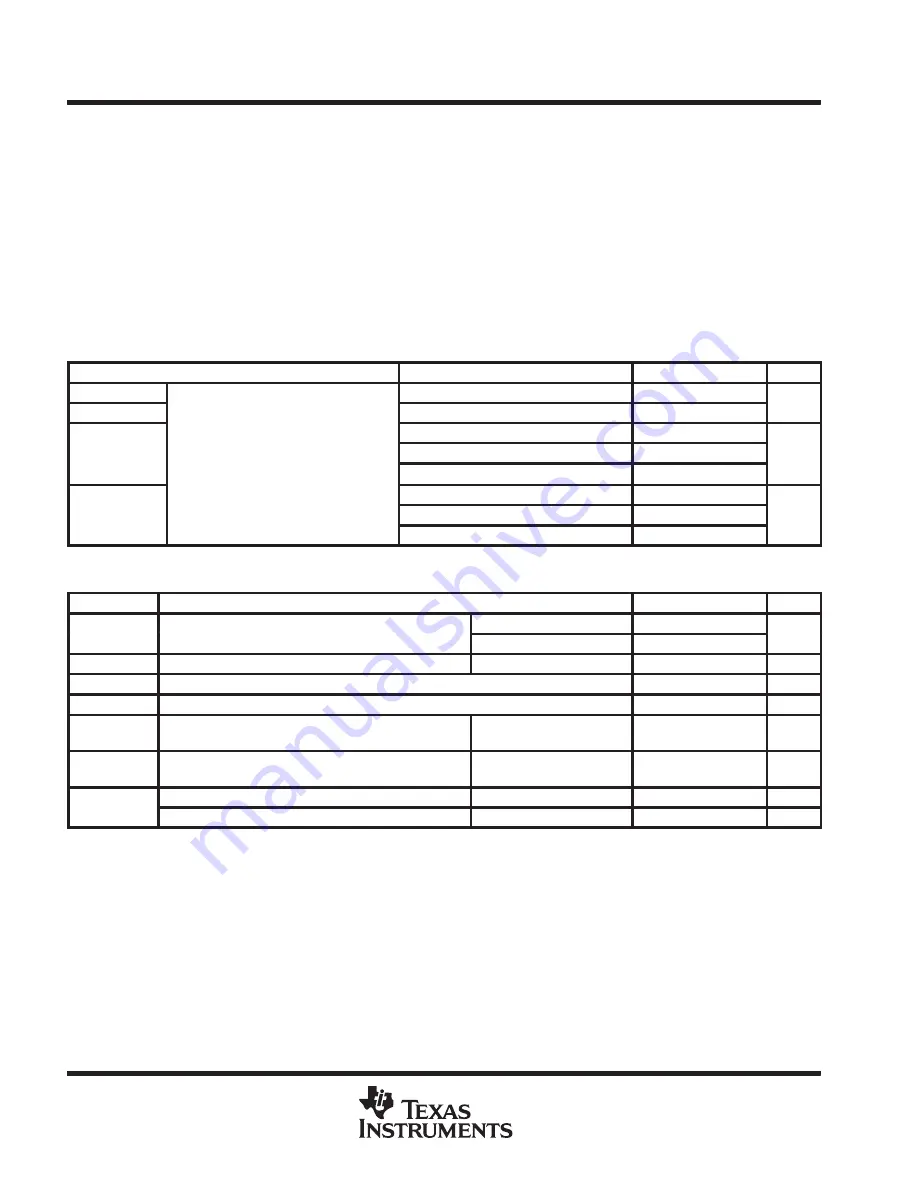
MSP430x11x1
MIXED SIGNAL MICROCONTROLLER
SLAS241C – SEPTEMBER 1999 – REVISED JUNE 2000
36
POST OFFICE BOX 655303
•
DALLAS, TEXAS 75265
electrical characteristics over recommended ranges of supply voltage and operating free-air
temperature (unless otherwise noted) (continued)
principle characteristics of the DCO
D
Individual devices have a minimum and maximum operation frequency. The specified parameters for
f
DCOx0
to f
DCOx7
are valid for all devices.
D
The DCO control bits DCO0, DCO1 and DCO2 have a step size as defined in parameter S
DCO
.
D
The modulation control bits MOD0 to MOD4 select how often f
DCO+1
is used within the period of 32 DCOCLK
cycles. f
DCO
is used for the remaining cycles. The frequency is an average = f
DCO
×
(2
MOD/32
).
D
The ranges selected by R
Sel4
to R
Sel5
, R
Sel5
to R
Sel6
, and R
Sel6
to R
Sel7
are overlapping.
wake-up from lower power modes (LPMx)
PARAMETER
TEST CONDITIONS
MIN
TYP
MAX
UNIT
t(LPM0)
VCC = 2.2 V/3 V
100
ns
t(LPM2)
VCC = 2.2 V/3 V
100
ns
f(MCLK) = 1 MHz,
VCC = 2.2 V/3 V
6
t(LPM3)
Delay time (see Note 22)
f(MCLK) = 2 MHz,
VCC = 2.2 V/3 V
6
µ
s
(
)
Delay time (see Note 22)
f(MCLK) = 3 MHz,
VCC = 2.2 V/3 V
6
f(MCLK) = 1 MHz,
VCC = 2.2 V/3 V
6
t(LPM4)
f(MCLK) = 2 MHz,
VCC = 2.2 V/3 V
6
µ
s
(
)
f(MCLK) = 3 MHz,
VCC = 2.2 V/3 V
6
NOTE 22: Parameter applicable only if DCOCLK is used for MCLK.
JTAG/programming
PARAMETER
TEST CONDITIONS
MIN
TYP
MAX
UNIT
f(TCK)
TCK frequency JTAG/test (see Note 25)
VCC = 2.2 V
dc
5
MHz
f(TCK)
TCK frequency, JTAG/test (see Note 25)
VCC = 3 V
dc
10
MHz
V(FB)
Fuse blow voltage, C versions (see Notes 23 and 24)
VCC = 2.2 V/3 V
3.5
3.9
V
I(FB)
Supply current on TDI during fuse blow (see Note 24) (C11x1)
100
mA
t(FB)
Time to blow the fuse (see Note 24) (C11x1)
1
ms
I(DD-PGM)
Current during program cycle (see Note 26)
VCC = 2.7 V/3.6 V,
MSP430F11x1
3
5
mA
I(DD-ERASE)
Current during erase cycle (see Note 26)
VCC = 2.7 V/3.6 V,
MSP430F11x1
3
5
mA
t( t ti )
Write/erase cycles
MSP430F11x1
10
4
10
5
t(retention)
Data retention TJ = 25
°
C
MSP430F11x1
100
Year
NOTES: 23. The power source to blow the fuse is applied to TDI pin.
24. Once the JTAG fuse is blown, no further access to the MSP430 JTAG/test feature is possible. The JTAG block is switched to bypass
mode.
25. f(TCK) may be restricted to meet the timing requirements of the module selected.
26. Duration of the program/erase cycle is determined by f(FTG) applied to the flash timing controller. It can be calculated as follows:
t(word write) = 35 x 1/f(FTG)
t(segment write, byte 0) = 30
×
1/f(FTG)
t(segment write, byte 1 – 63) = 20
×
1/f(FTG)
t(mass erase) = 5297 x 1/f(FTG)
t(page erase) = 4819 x 1/f(FTG)










































